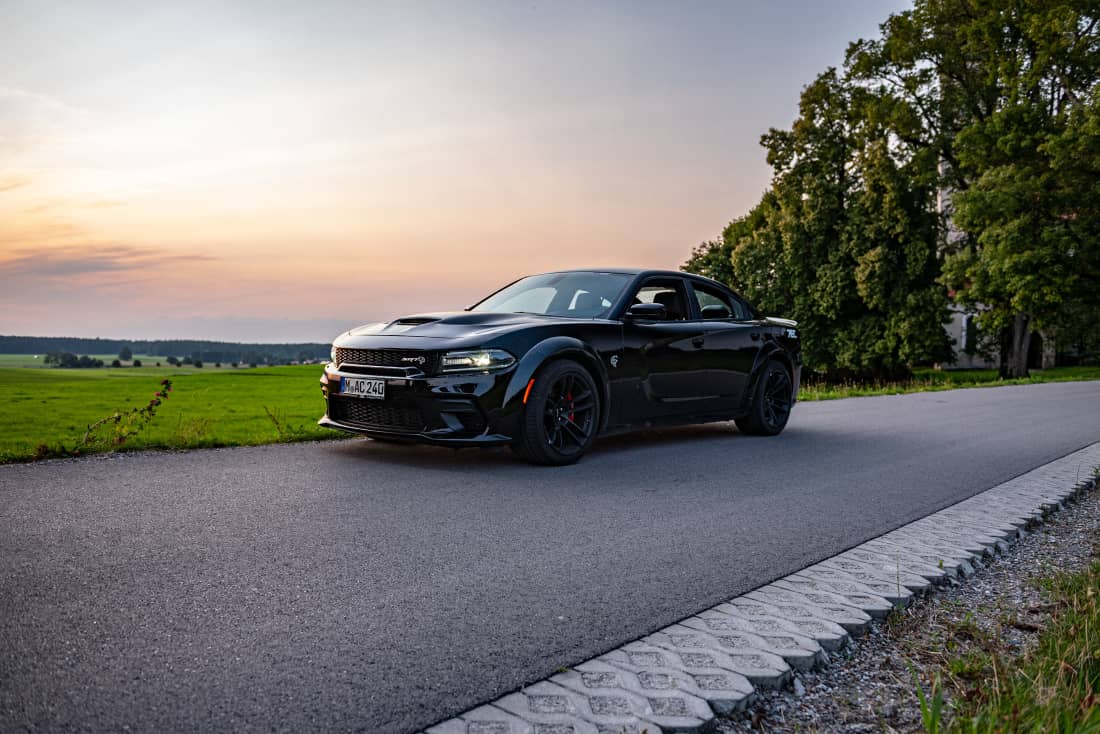
The Dodge Charger SRT Hellcat widebody at a glance
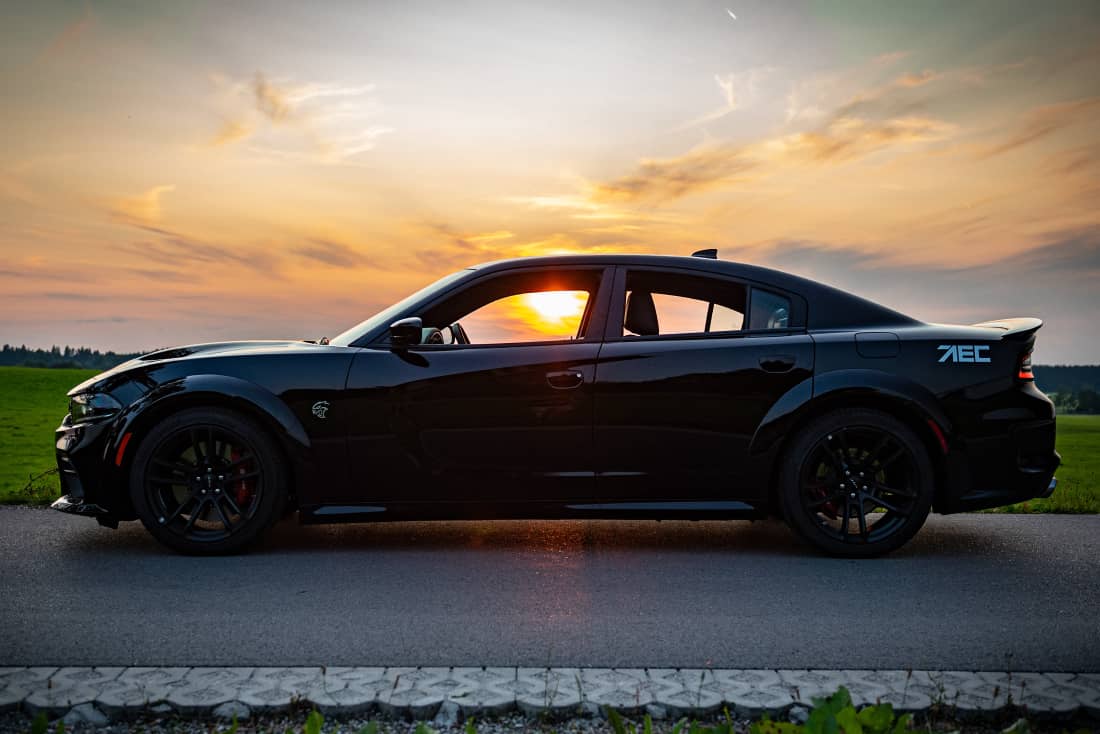
The Hellcat is anything but nice
Vicious, malicious, nasty, ruthless, diabolical, vulgar – there are many words that apply to the Dodge Charger SRT Hellcat (combined fuel consumption: 14.7 l / 100 km; combined CO2 emissions: 395 g / km²). These are words that primarily describe the 6.2 liter HEMI V8 with its 2.4 liter (!) Compressor. No German, no European and hardly an American car is so raw in its design and torments the mounted all-weather tires (more on that later) in the all-round 305 XXL format so enjoyably.
Actually, I could end the test report at this point, at the same time refer to the driving impressions of the almost identical Challenger SRT Hellcat from two years ago and purposefully postpone that the days of such cars are definitely numbered. But there is a little more between heaven and hell that moved me with the Charger. Let’s start with the fact that car manufacturer Dodge, through its general importer AEC Europe, has a recommended retail price for the four-door Hellcat of just 88,990 euros.
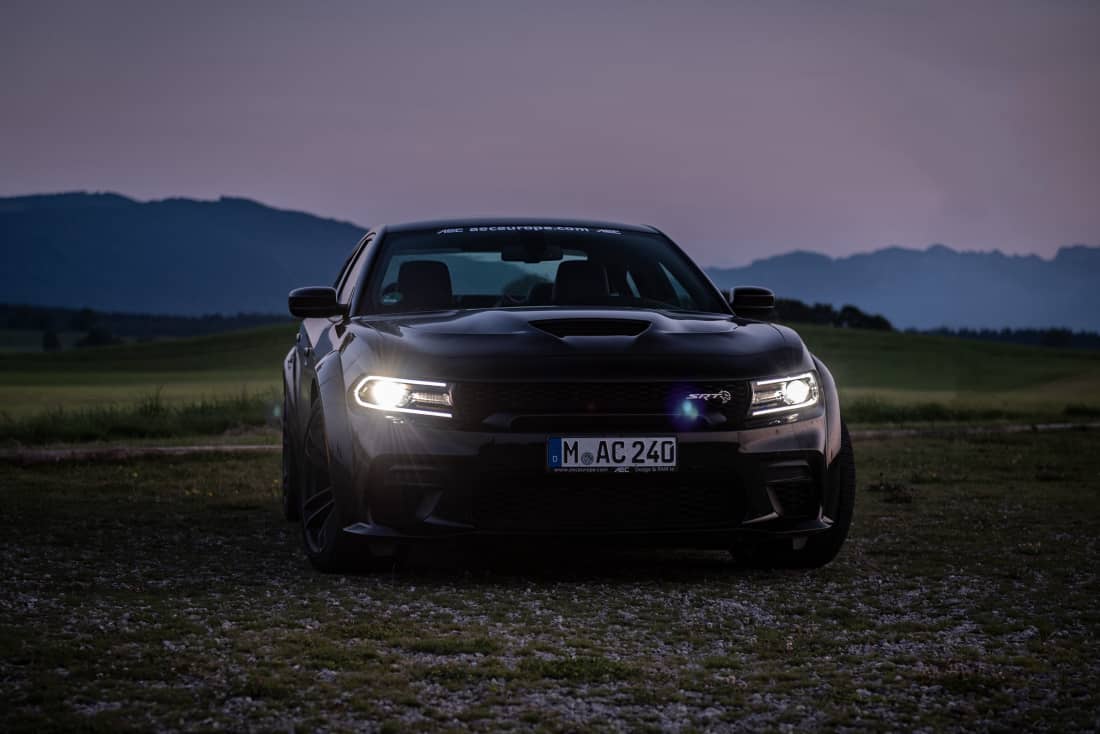
Heavy performance data, only with rear-wheel drive
Still a lot of money, no question about it. However, you get a whopping 527 kW / 717 PS in action with 881 Newton meters of torque. No factory Audi, no factory Mercedes offers more power and at the same time reaches a top speed of 322 km / h. Between the lines, however, it must be mentioned that the 3.7 seconds from zero to 100 km / h at the regulars’ table on Saturday evening are hardly enough for a top placement and the southern German competition is already taking several tenths away from the only rear-wheel-driven colleague.
It is also less suspicious of a parade that the Charger, which weighs a little more than two tons, comes from the factory on Pirelli P Zeros with all-weather detection. With them, the 5.10 meter long limousine prances through bends as gracefully as an elephant on roller skates. The electronically adjustable Billstein chassis brings with it curve-robbing qualities, which, whether the constantly lubricating tires, could not really be experienced. Oversteer in all forms is what the Charger Hellcat masters with flying colors – even on a straight line. It hardly needs to be mentioned that the driving behavior on slightly wet roads only becomes more demanding.
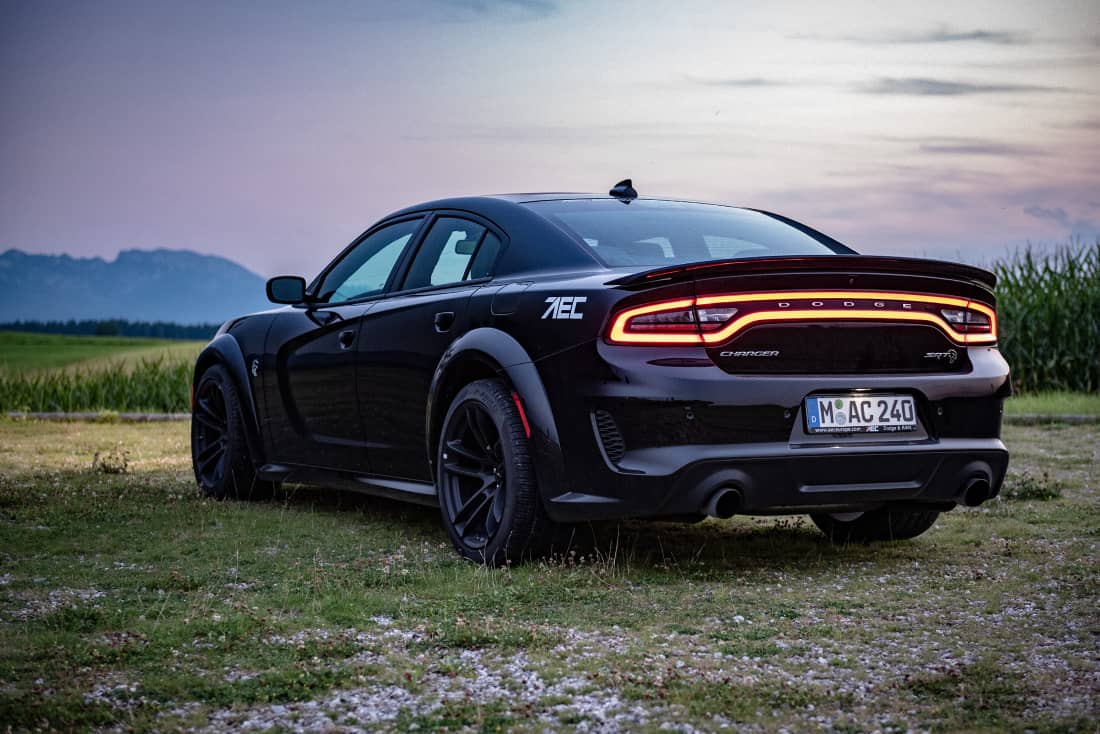
Acoustically emerged from hell with NAP flap exhaust
You could leave it in eco-setting with only 500 hp (according to US standards) on wet days, but the test days are tight and the monster in the bow just sounds too good to just let it warm up a little in the partial load range. It is the NAP flap system retrofitted by AEC from the import port of Antwerp that turns the already loud hellcat into an acoustic beast at the push of a button. It sounds according to all the rules of the art and of course TÜV-compliant. Whether one should greet the German law enforcement officer in his diesel Touran with the flap open with a double throttle is an open question at this point. It is better to shift the lightning-fast ZF 8-speed Torqueflite transmission up one gear.
In the range between 50 and 60 km / h, the V8 screeching collapses for a moment (some noise regulations had to be complied with) in order to give the authoritative hum of the compressor the upper hand. If the Hellcat, cast in sheet metal, were an animal, it would certainly not be on display in the petting zoo, but rather serve as a trophy for a big game hunt. The Dodge Charger SRT Hellcat hardly knows any political correctness and so it does not matter that the on-board computer only displays current consumption rounded up, without decimal places. If you internalize the formula 70 liters (tank volume) divided by 20 liters (average consumption) in your head, you are always on the safe side.
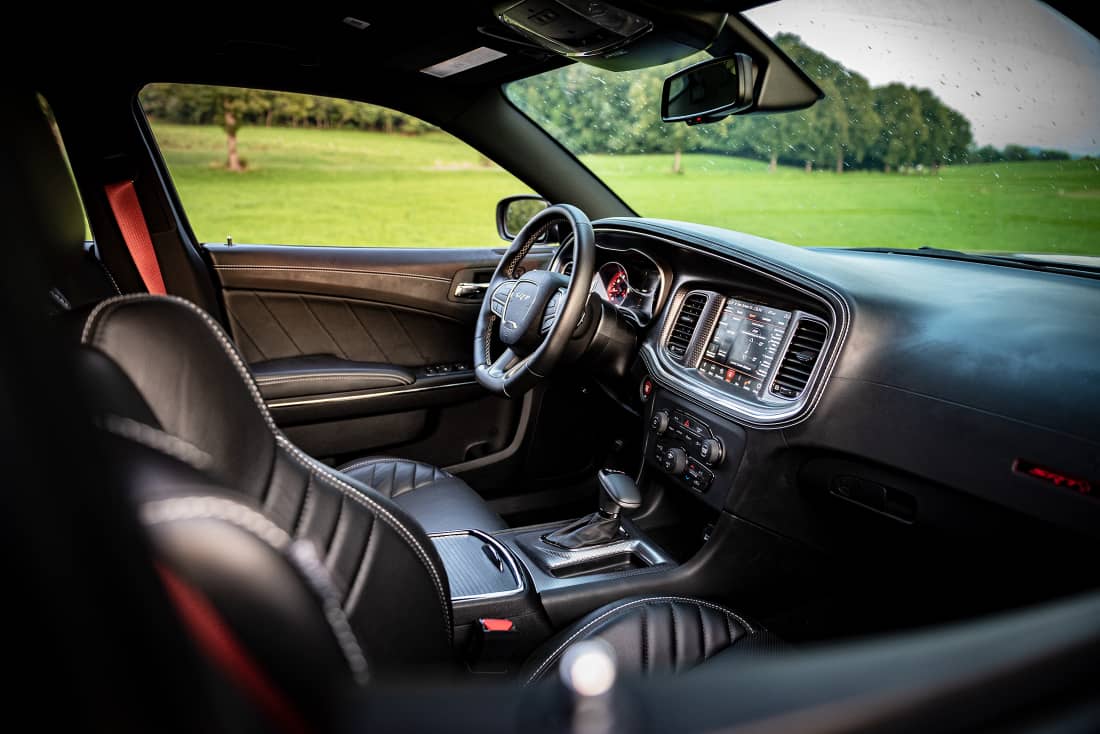
A question of point of view
But you can also see it positively: 350 kilometers range is more than many modern electric cars have to offer. It’s always the point of view that defines whether you are morally right or wrong. The Americans are clearly on the wrong side when it comes to the interior. Yes, the leather-covered sofa sports armchairs are comfortable, but that’s about it with the positive aspects. The plastic landscape looks a little sad, the valance with its strange shift paddles lies in the hand like a bus steering wheel and the infotainment system urgently (very urgently!) Needs to be overhauled. The Uconnect navigation may know the eternally straight stretches of the Midwest, but in the Upper Bavarian no man’s land it brushes the sails and guides hellcat and driver along cycle paths and closed private roads. But the low price has to come from somewhere.
When asked about assistants, the only thing I remembered was the blind spot warning. Otherwise, the Dodge, which continues to be based on the Daimler-Chrysler E-Class platform from the 1990s, remains an extremely analog vehicle. Yes, even the rev counter and speedometer are still equipped with needles. This could also be seen as positive again: This is at least a rudimentary way of circumventing the prevailing chip shortage in the automotive sector.
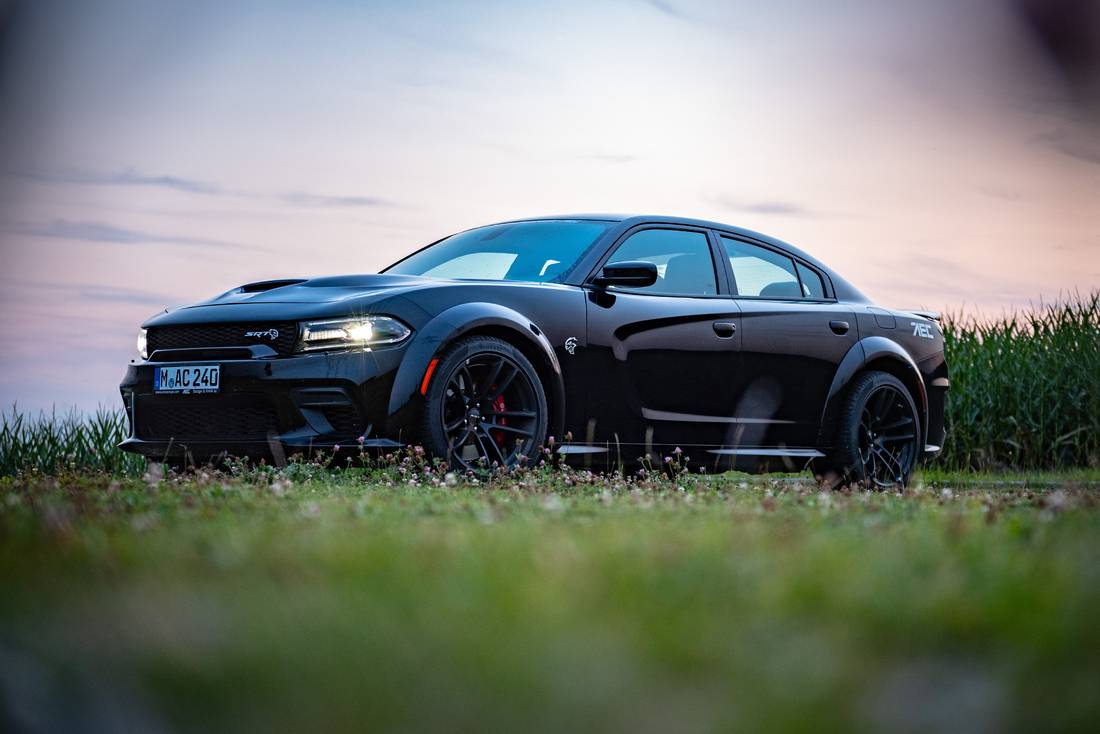
Conclusion
The Dodge Charger SRT Hellcat remains a fun device for all those who find an M BMW, an RS Audi or an AMG Mercedes too boring, too straightforward and generally too Teutonic. Nobody offers more displacement, performance and real sound at this price. Is the Charger Hellcat unreasonable? Definitely! But even the hell cat can retract its claws and, on leisurely overland journeys, achieve consumption of less than 10 liters of premium gasoline per 100 kilometers. At this point it is quite certain that the concept of the fuel-destroying V8 will no longer last forever. Meanwhile, Dodge is thinking out loud about an electric successor. (Text and image: Thomas Vogelhuber)








